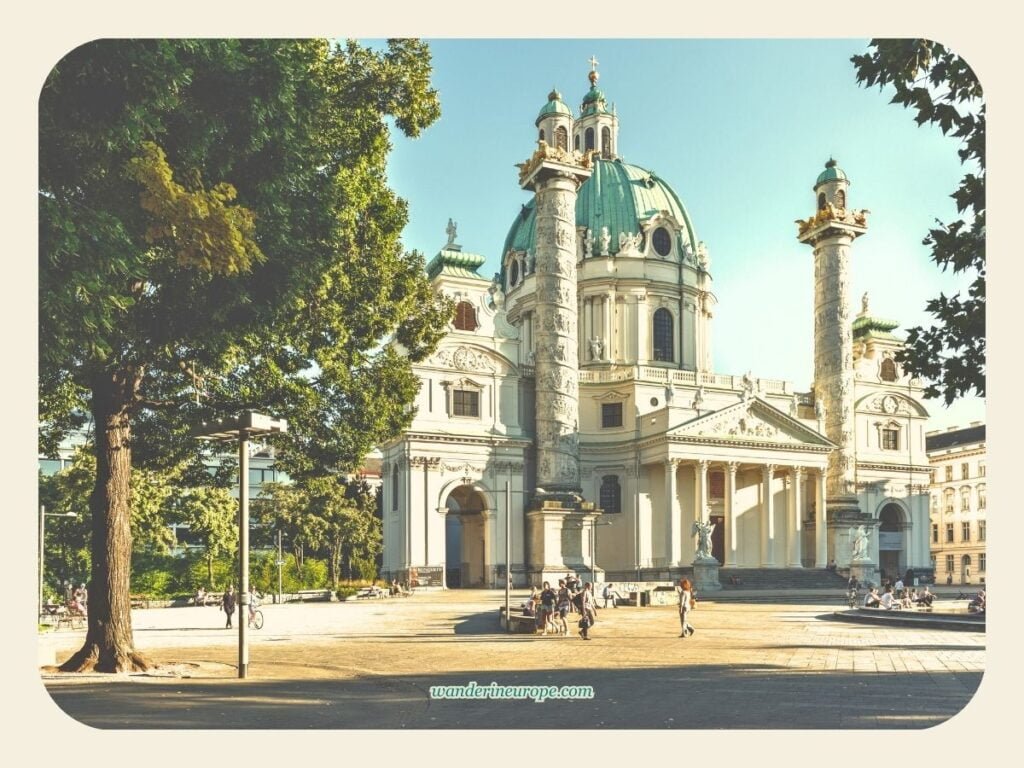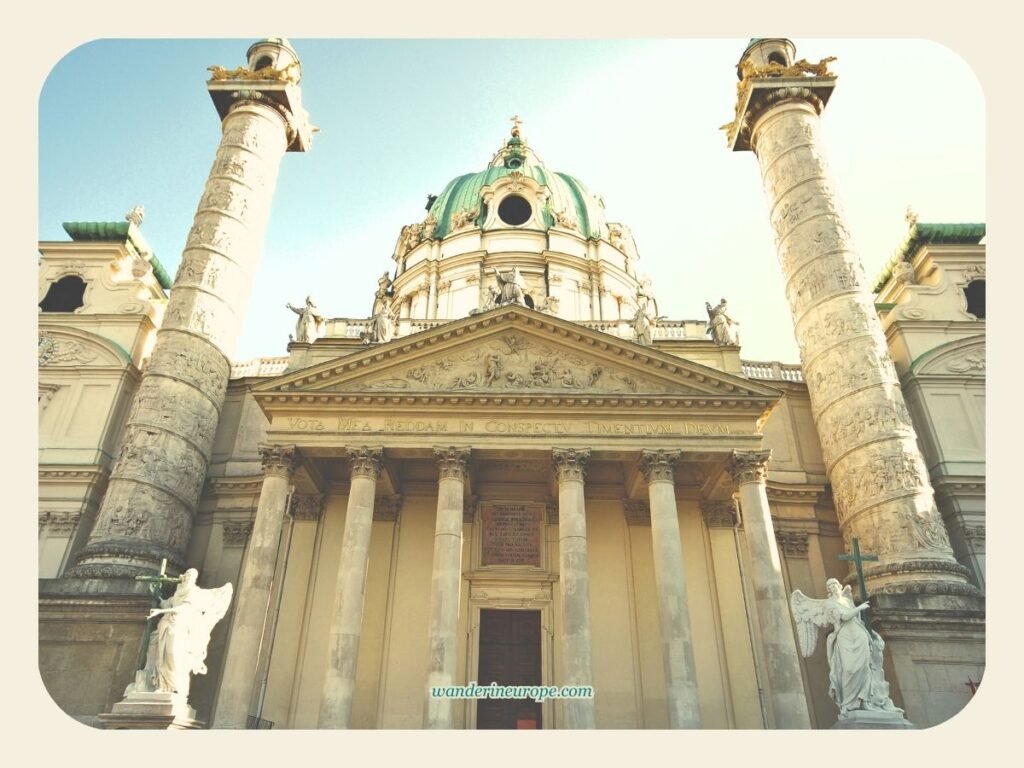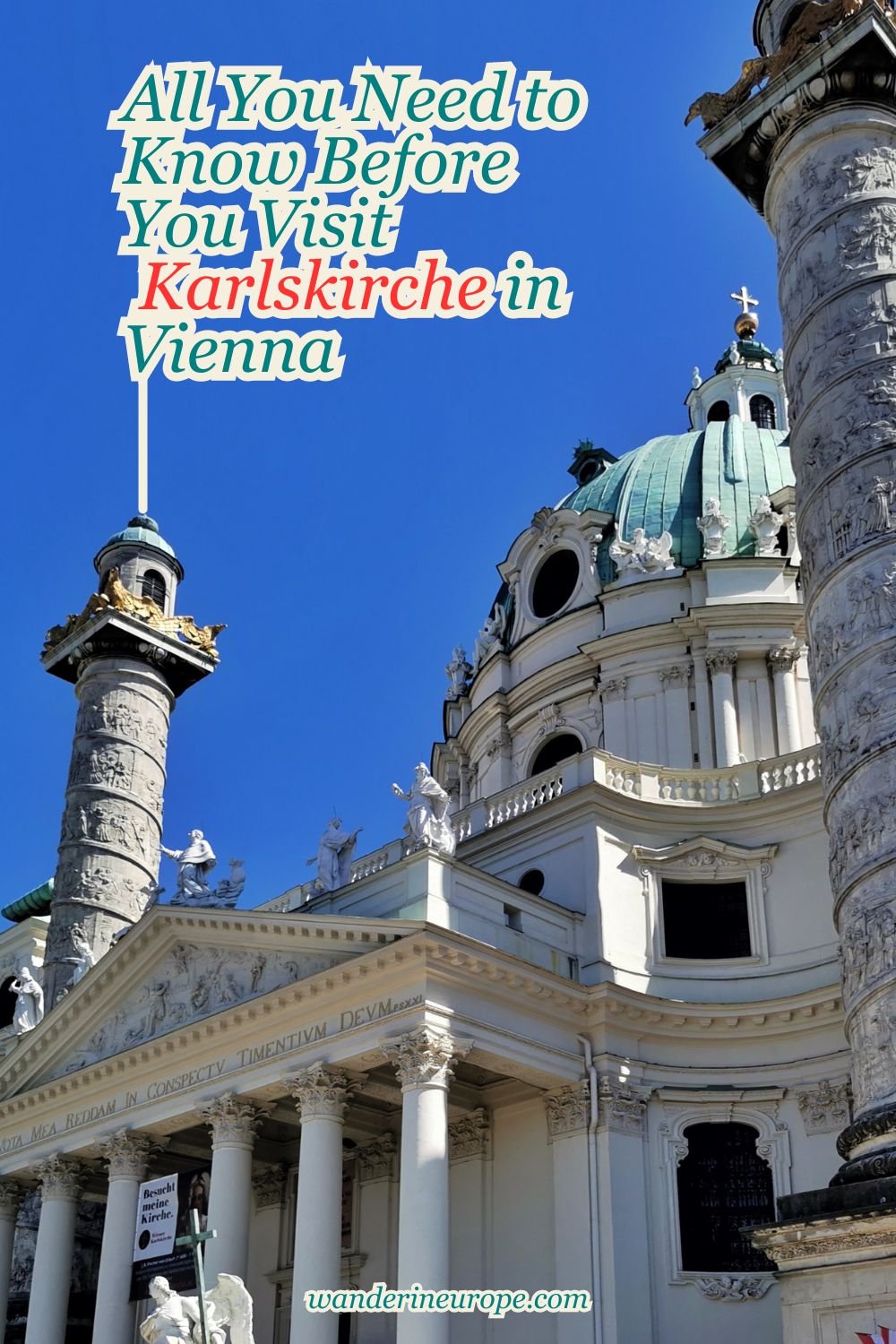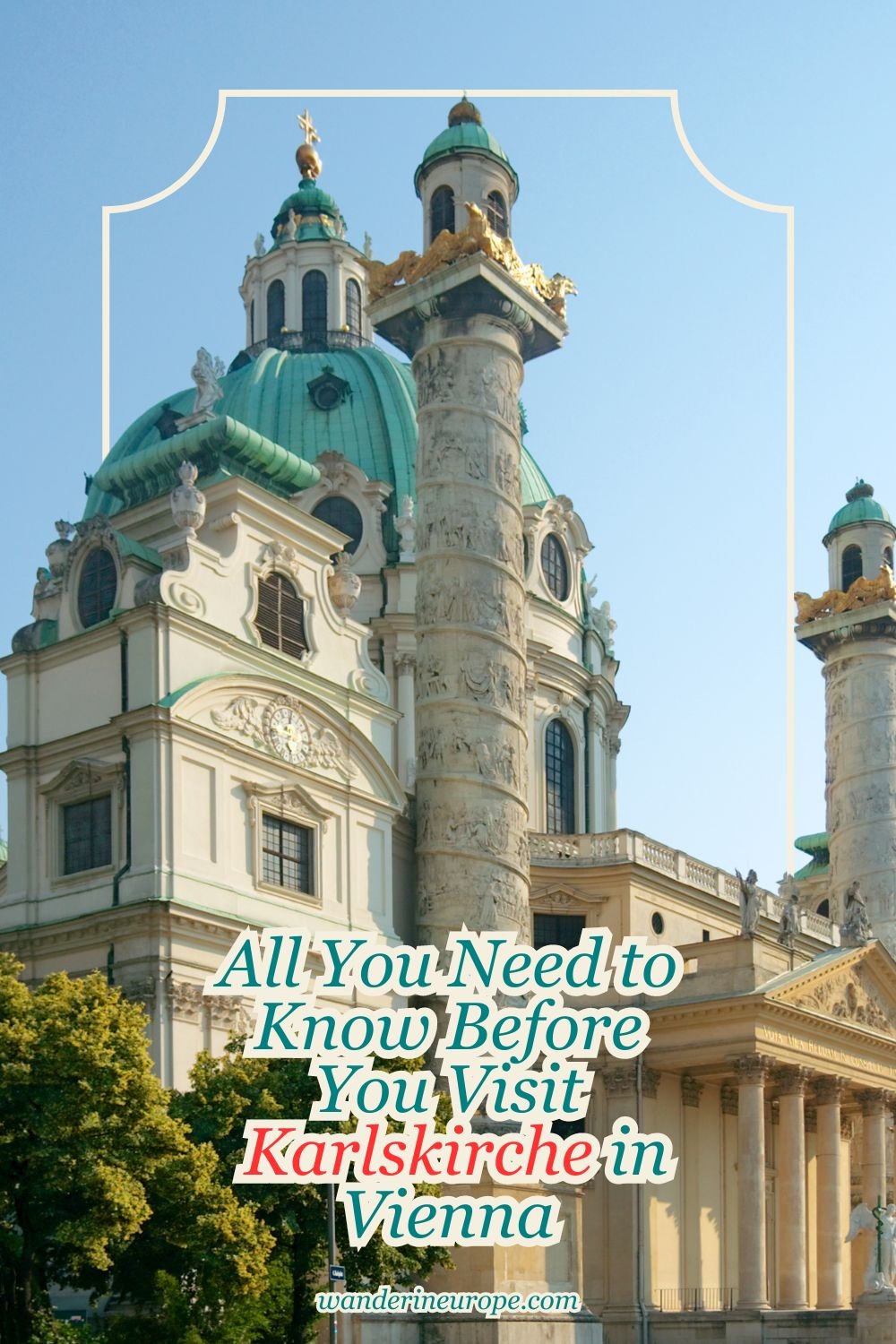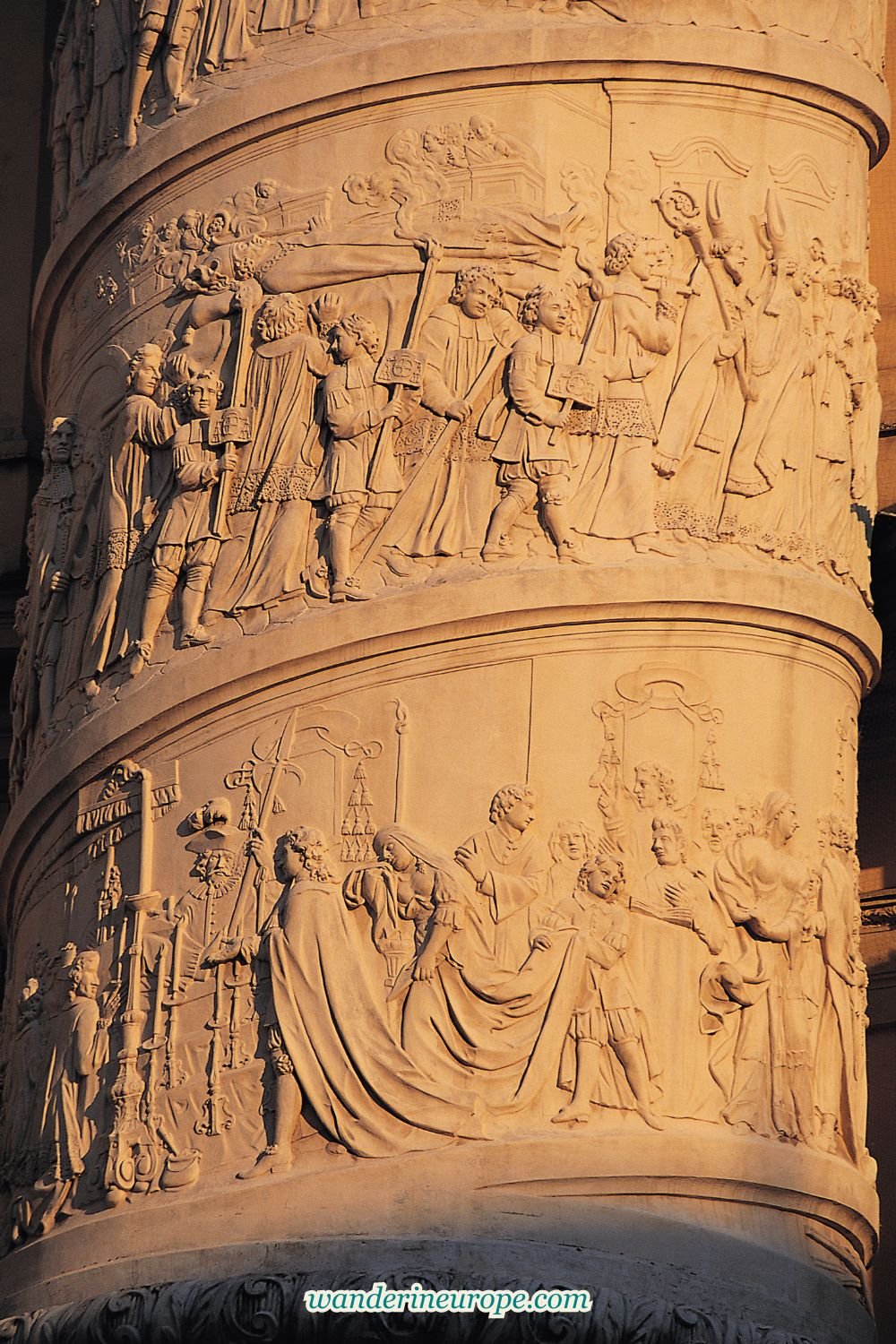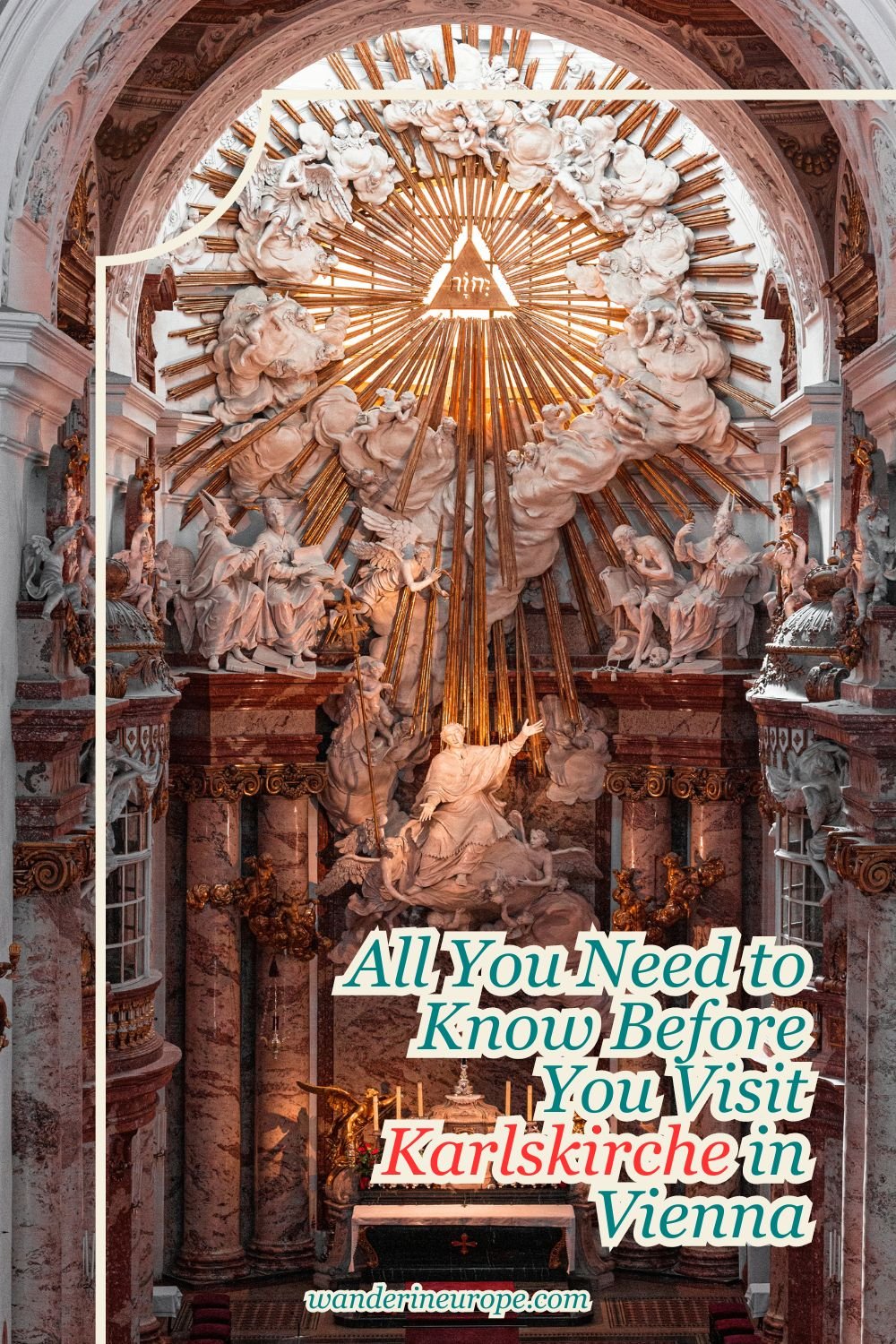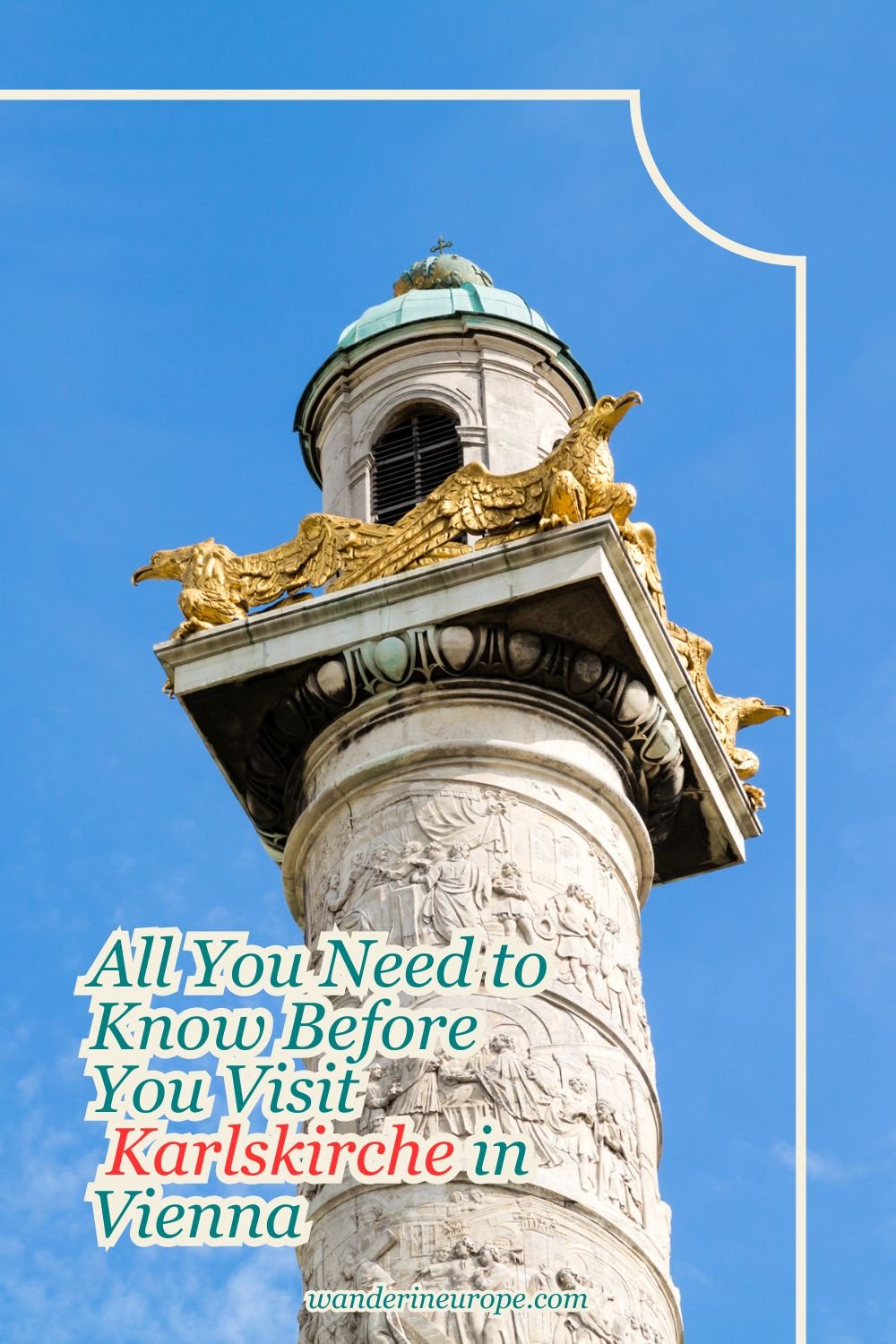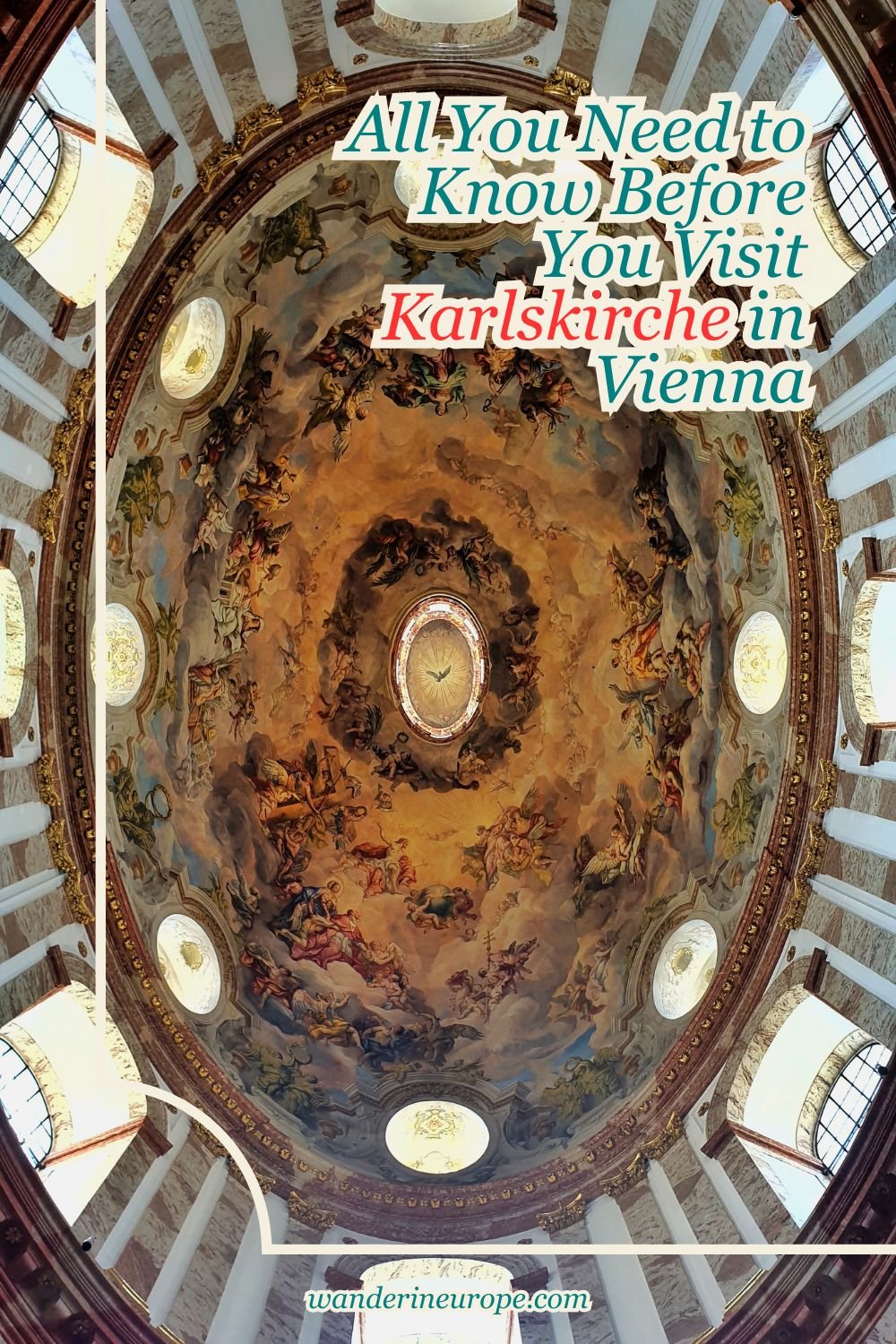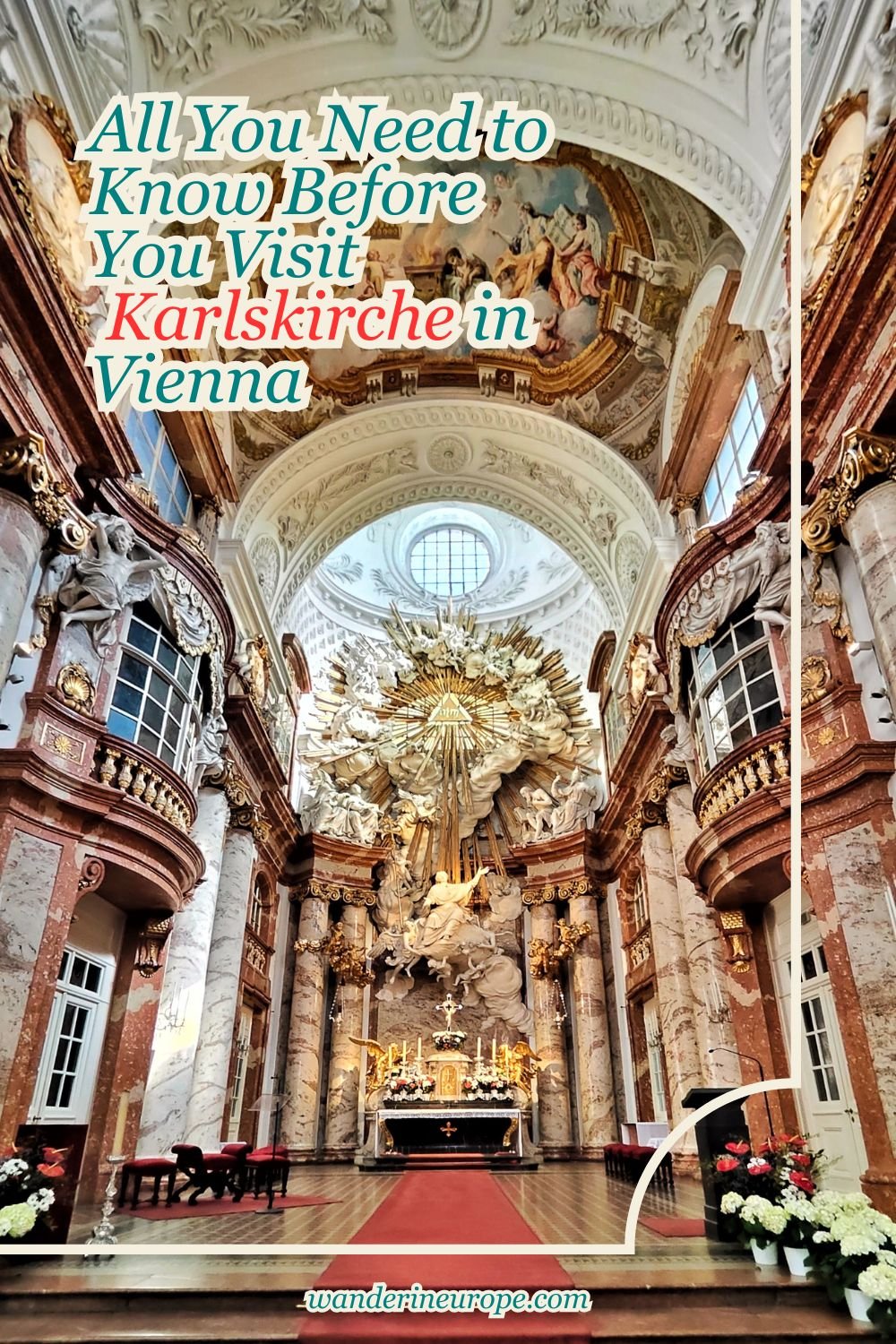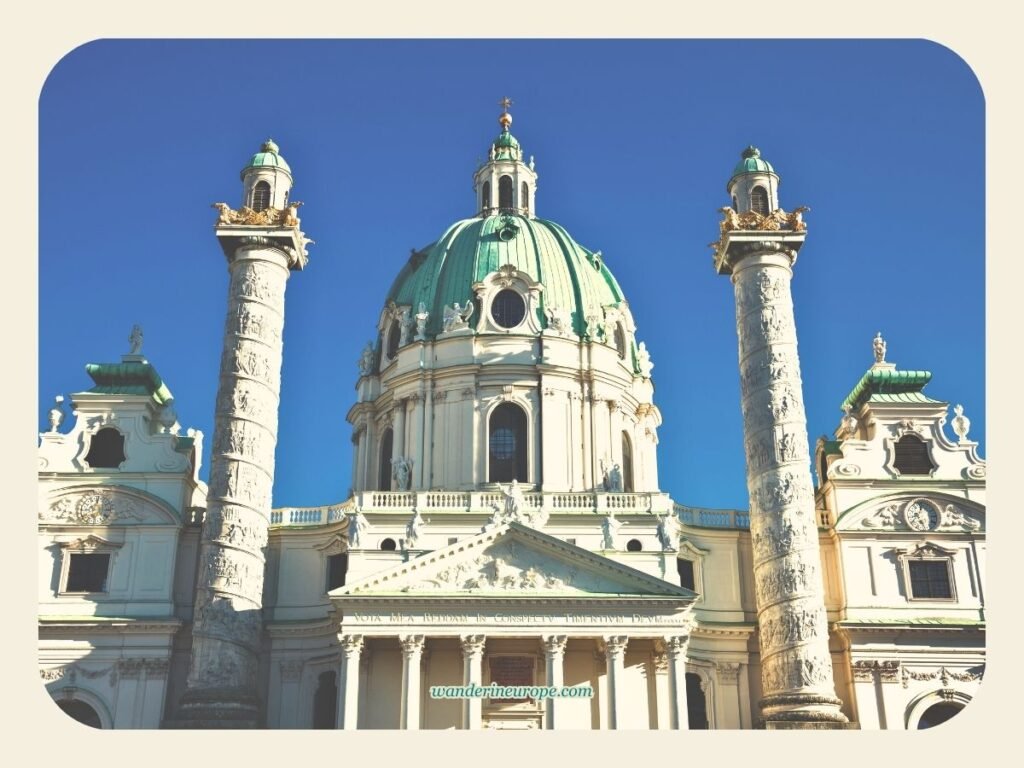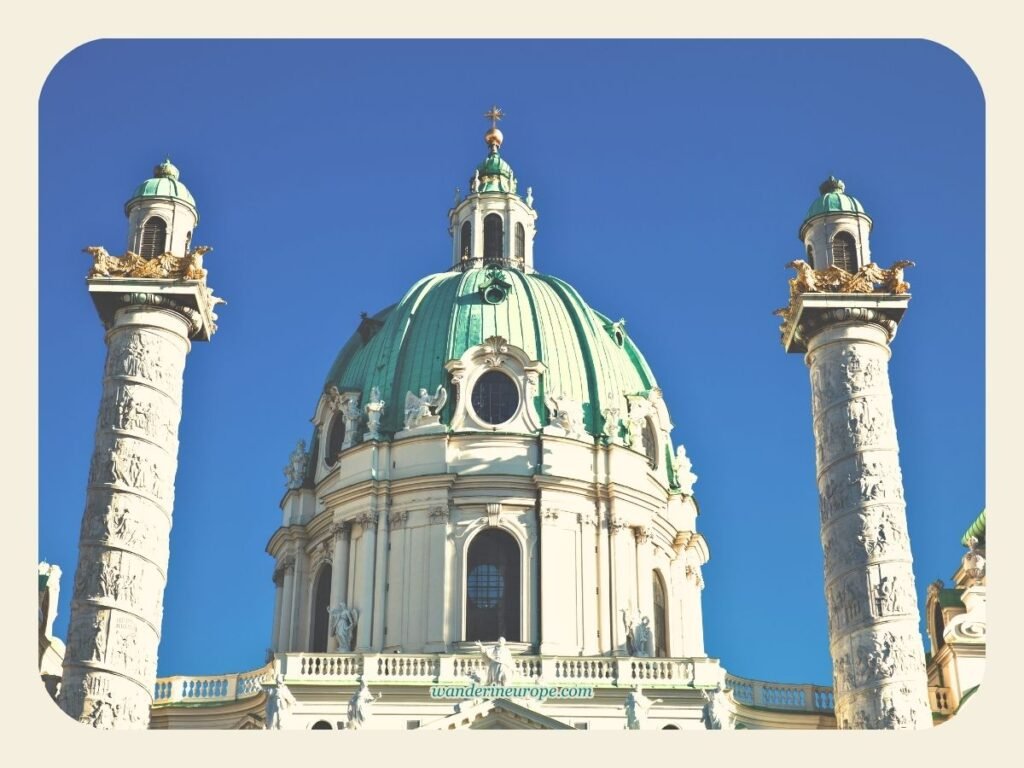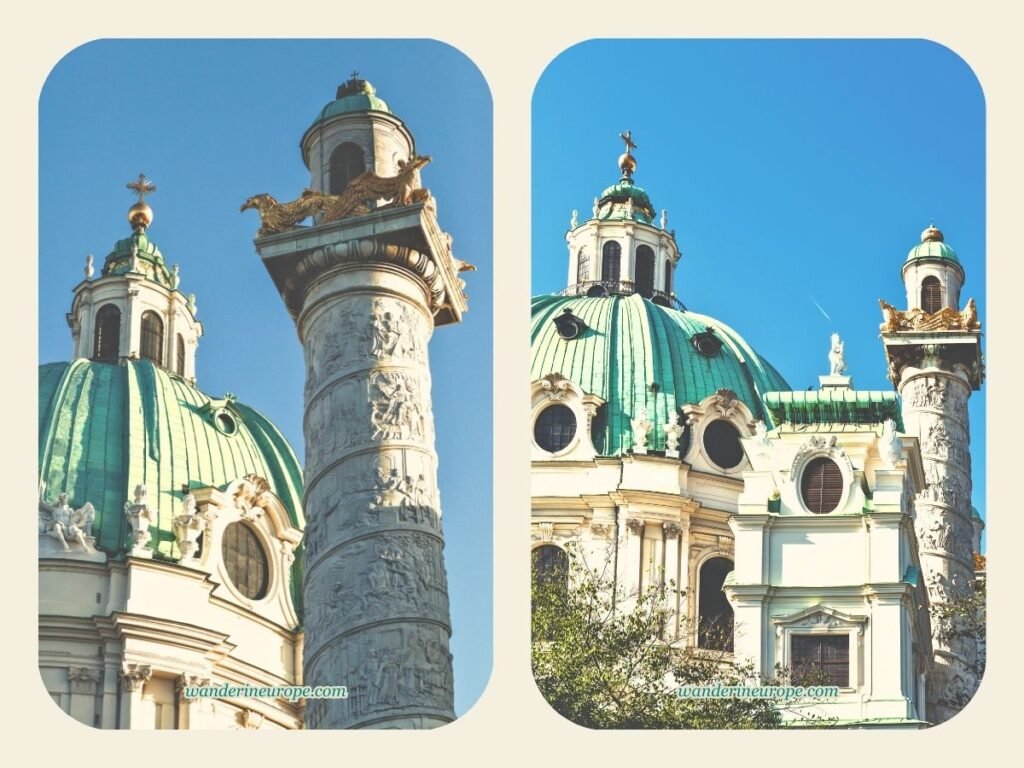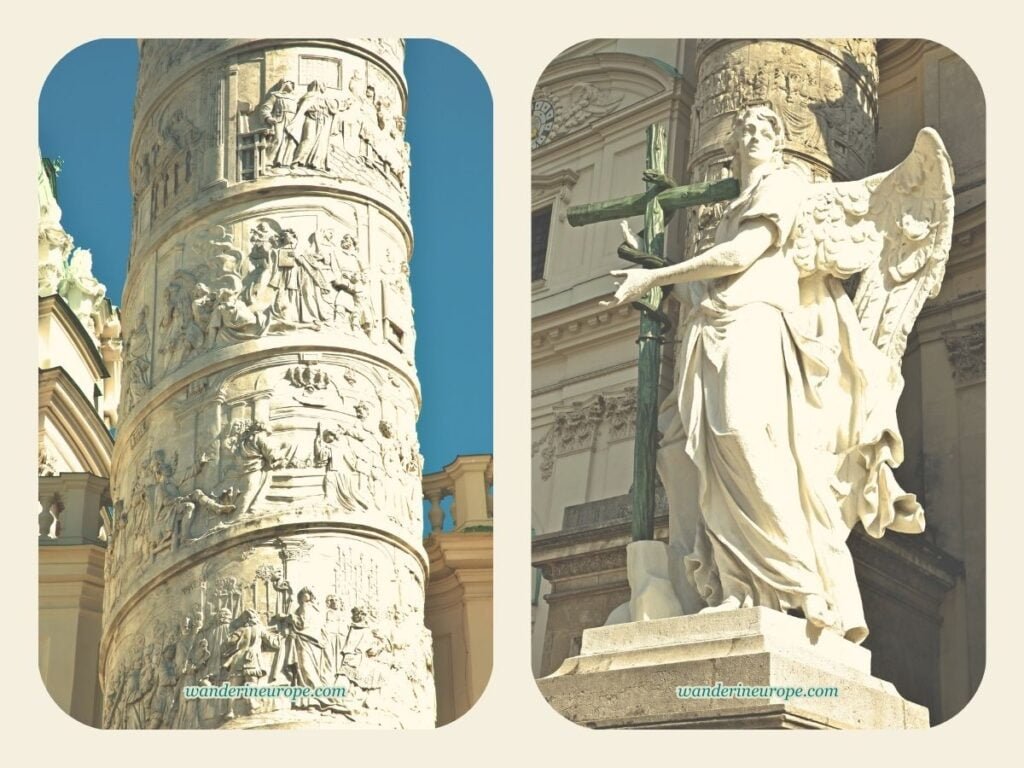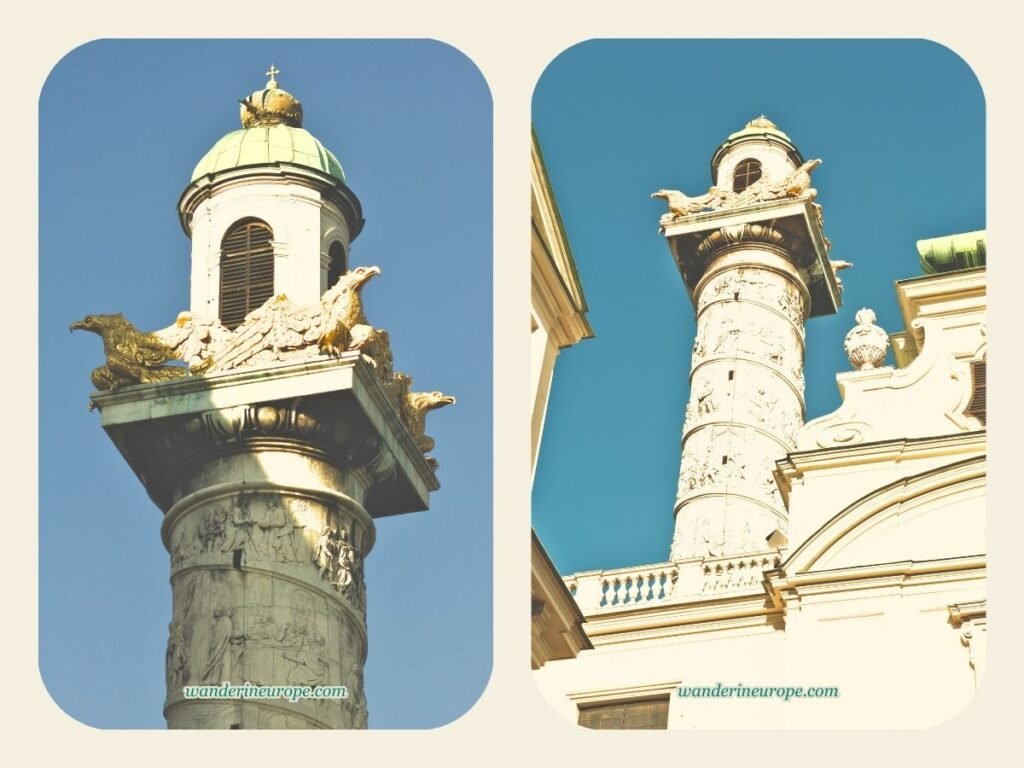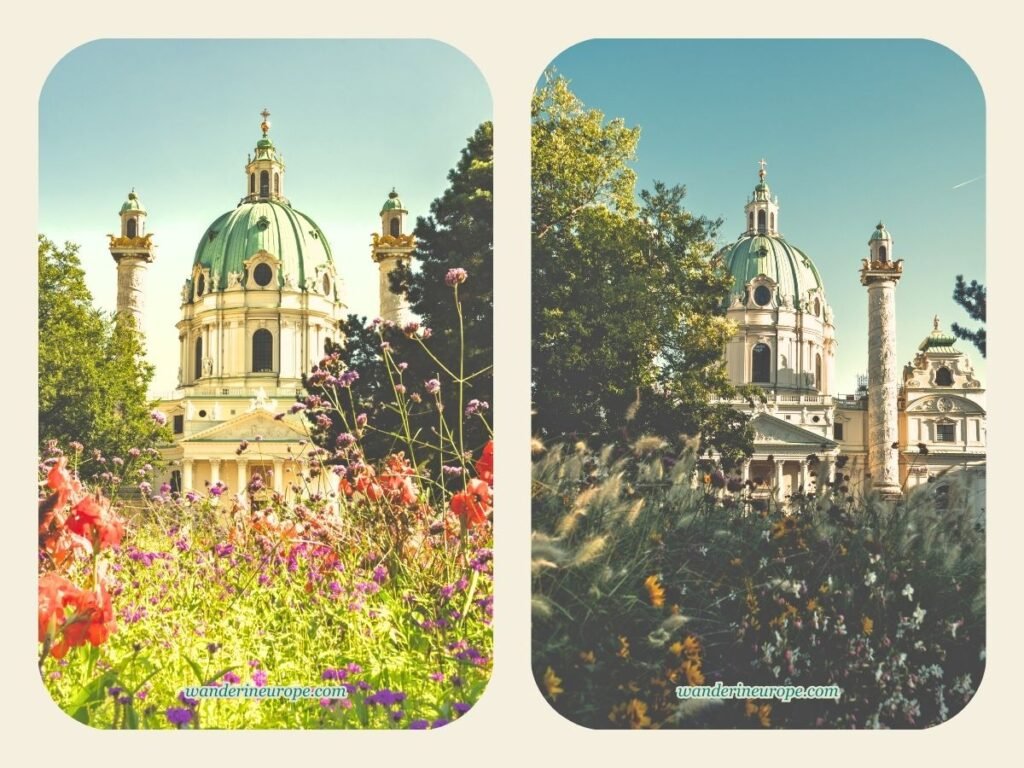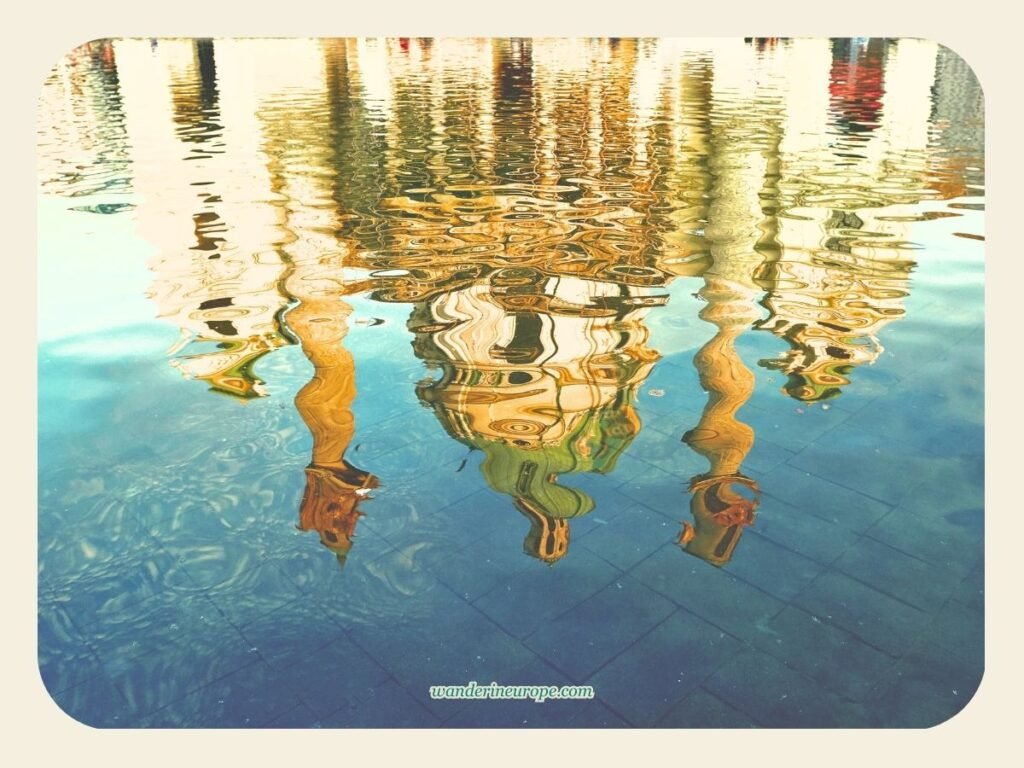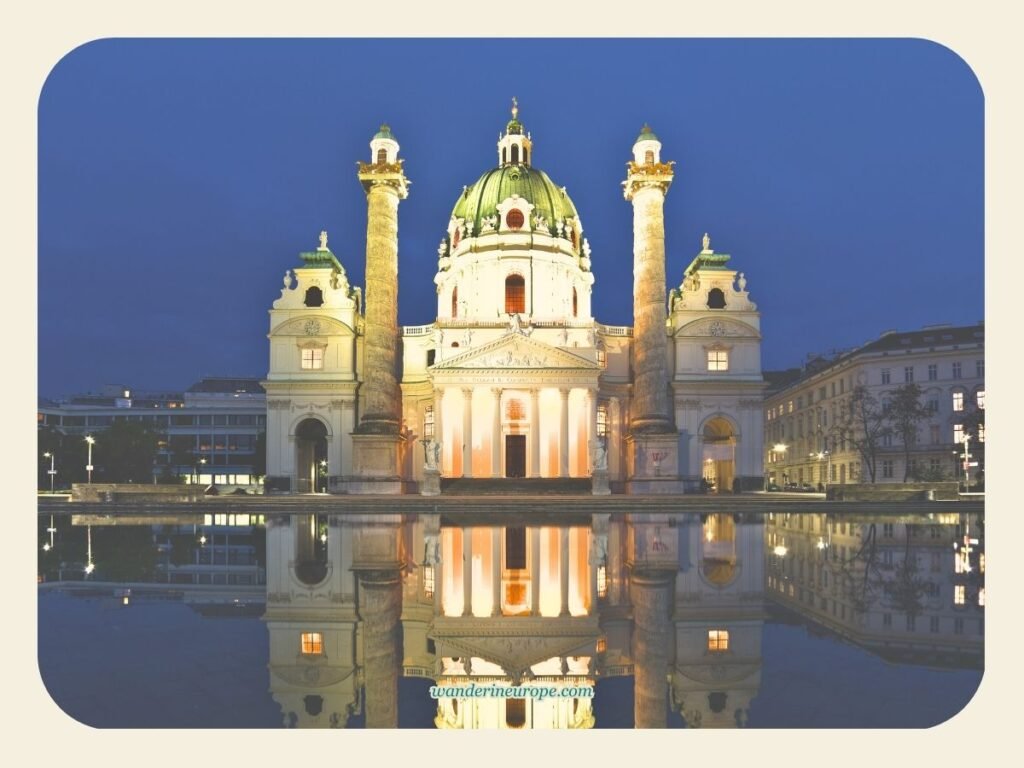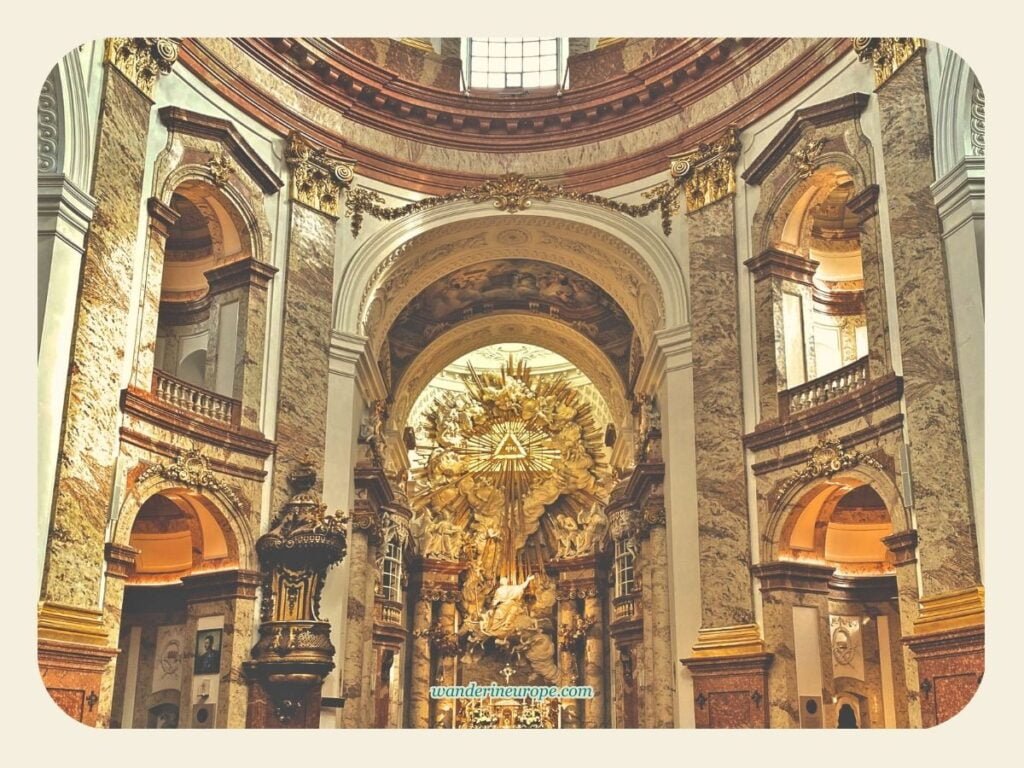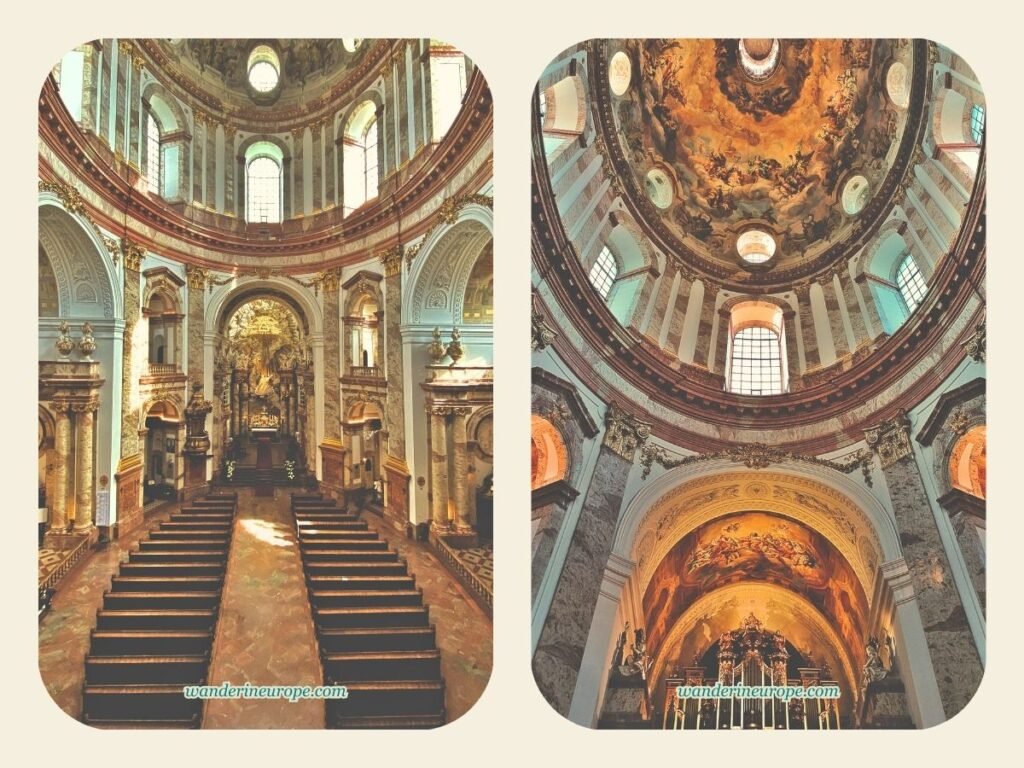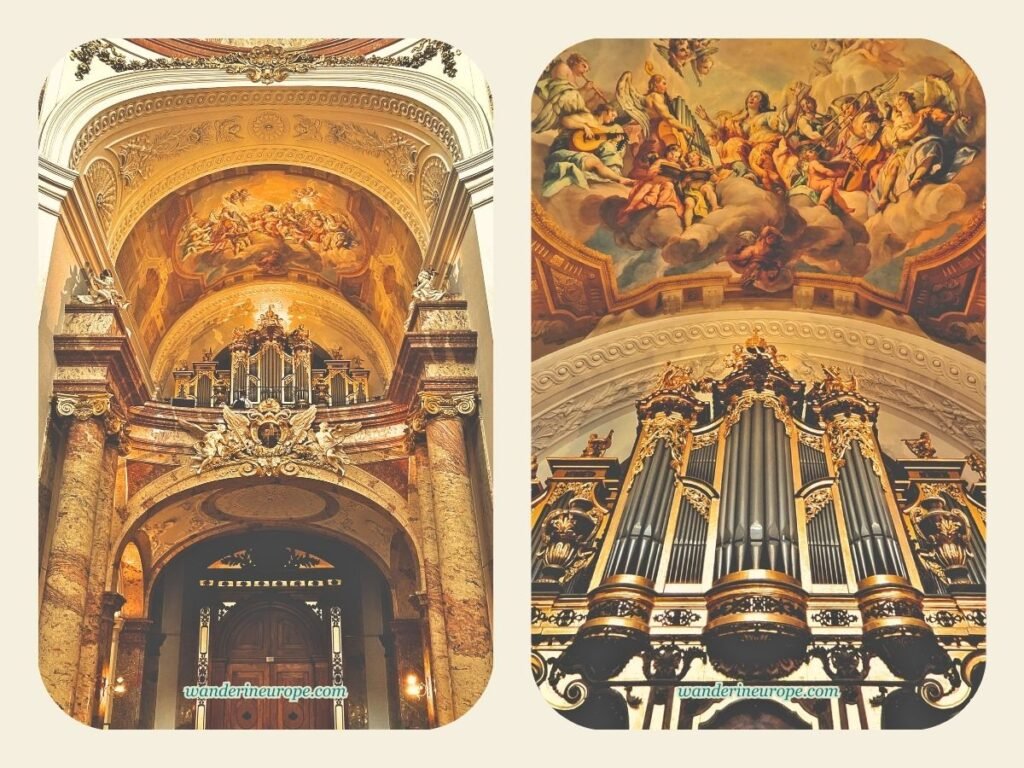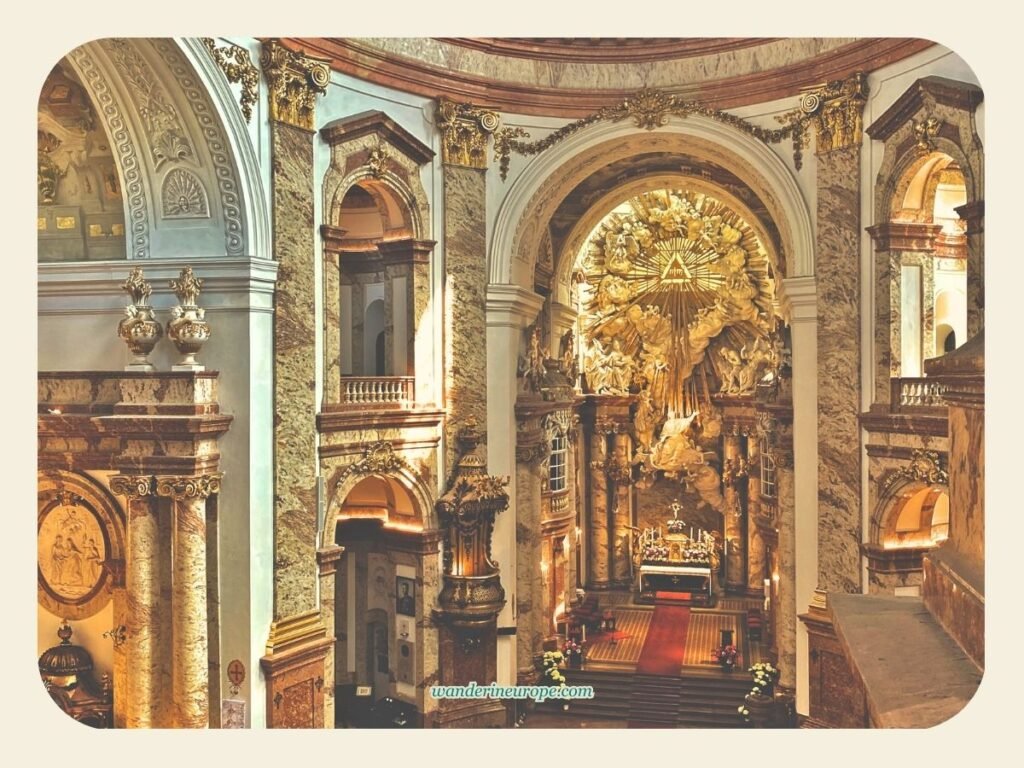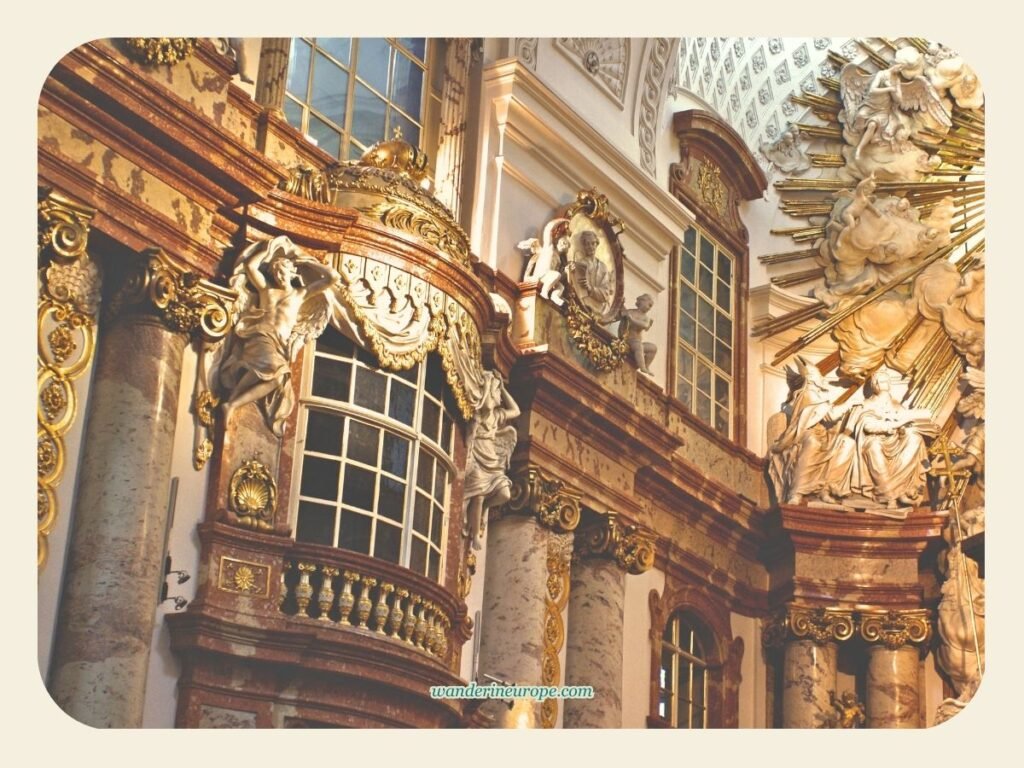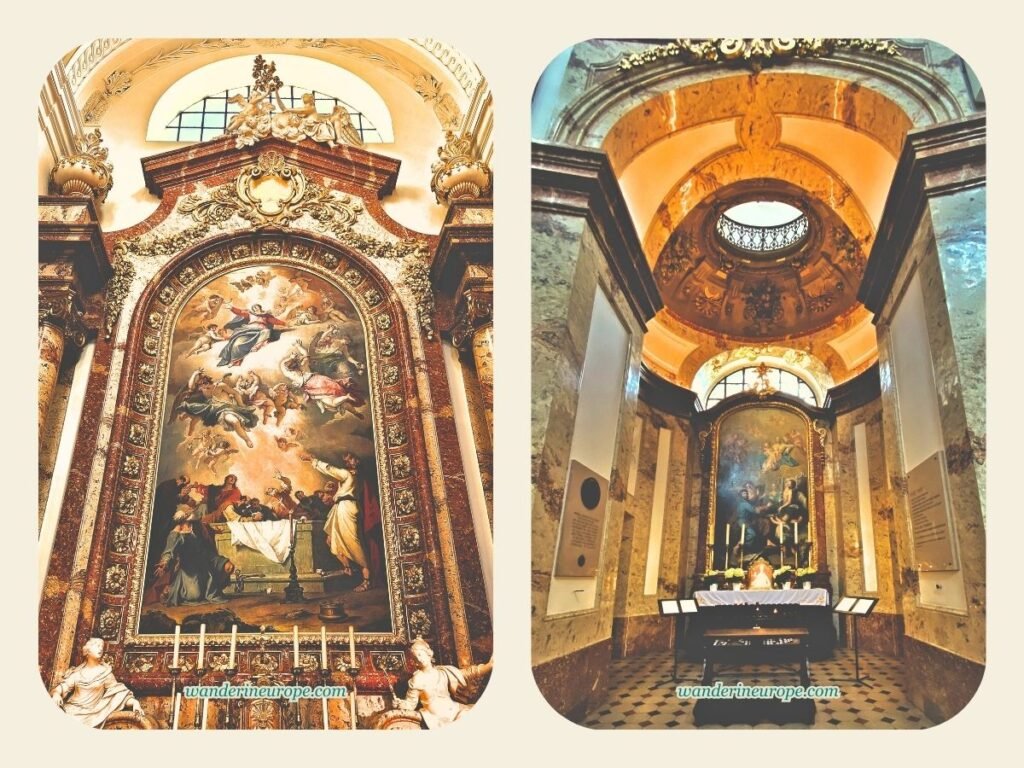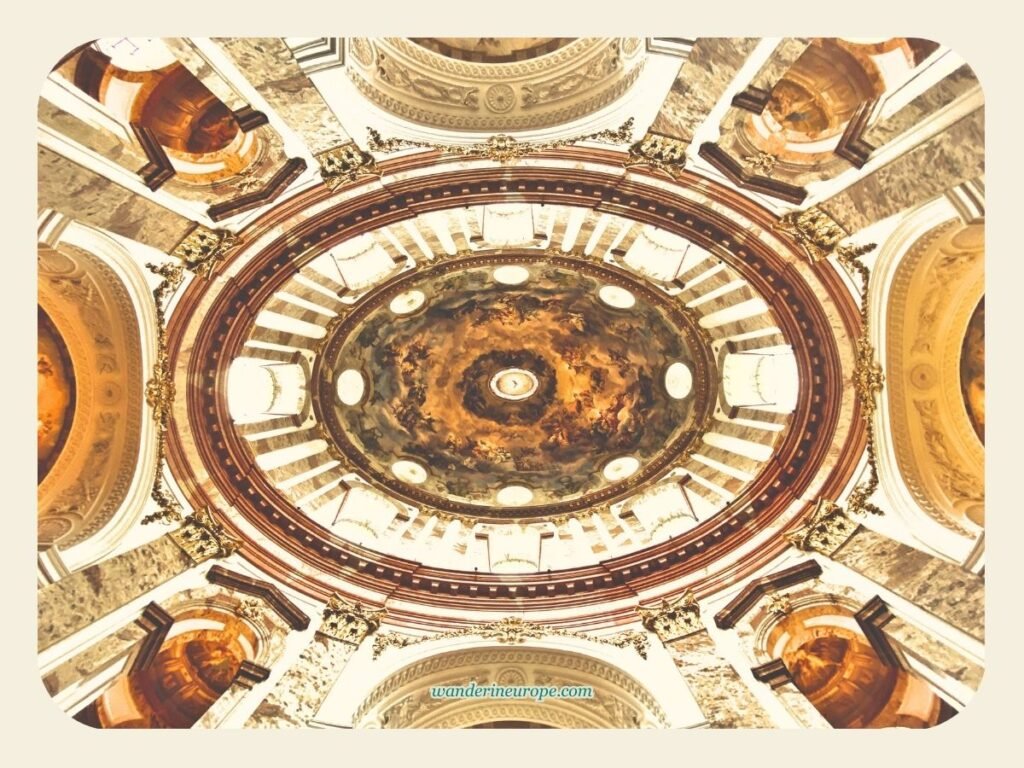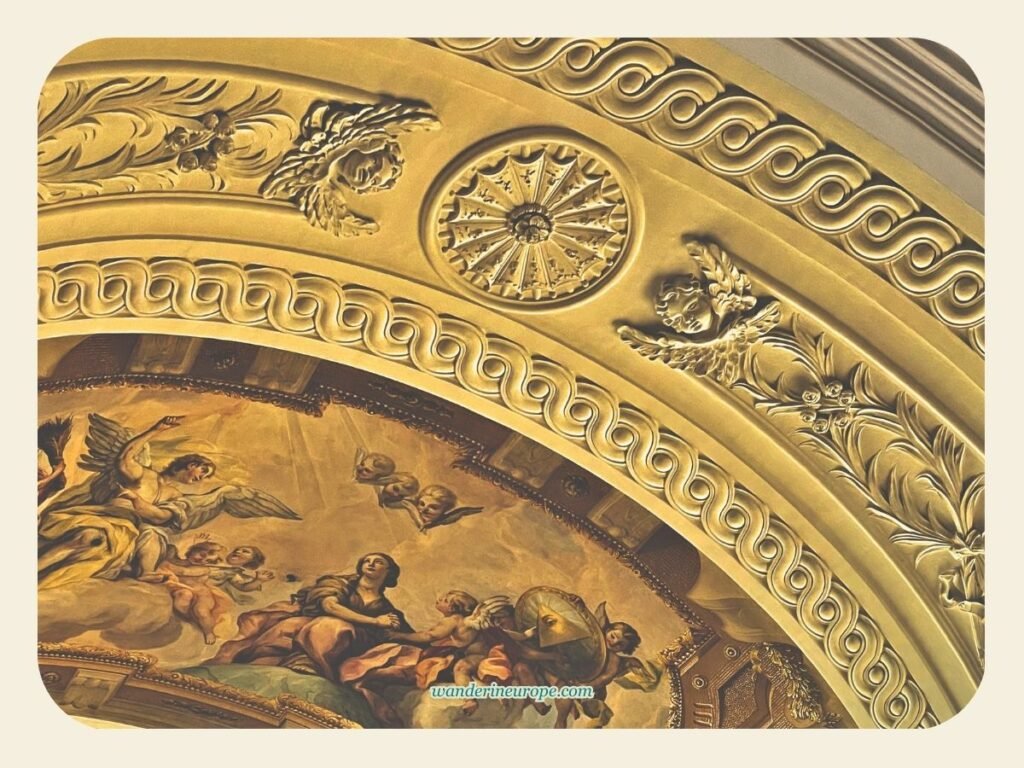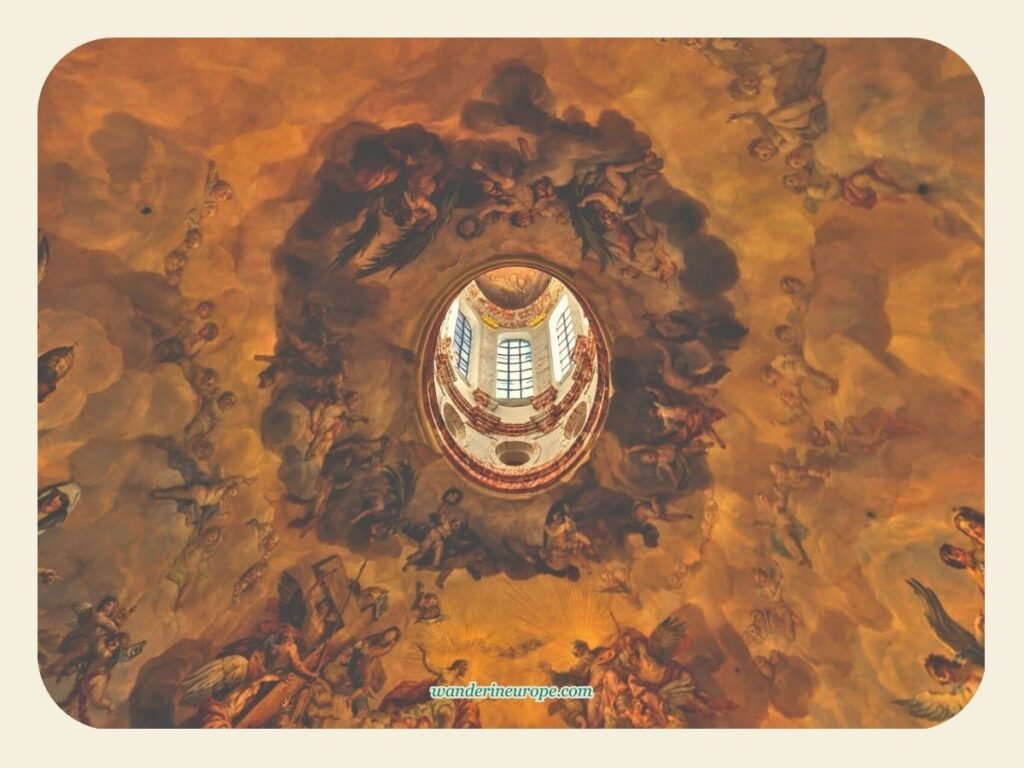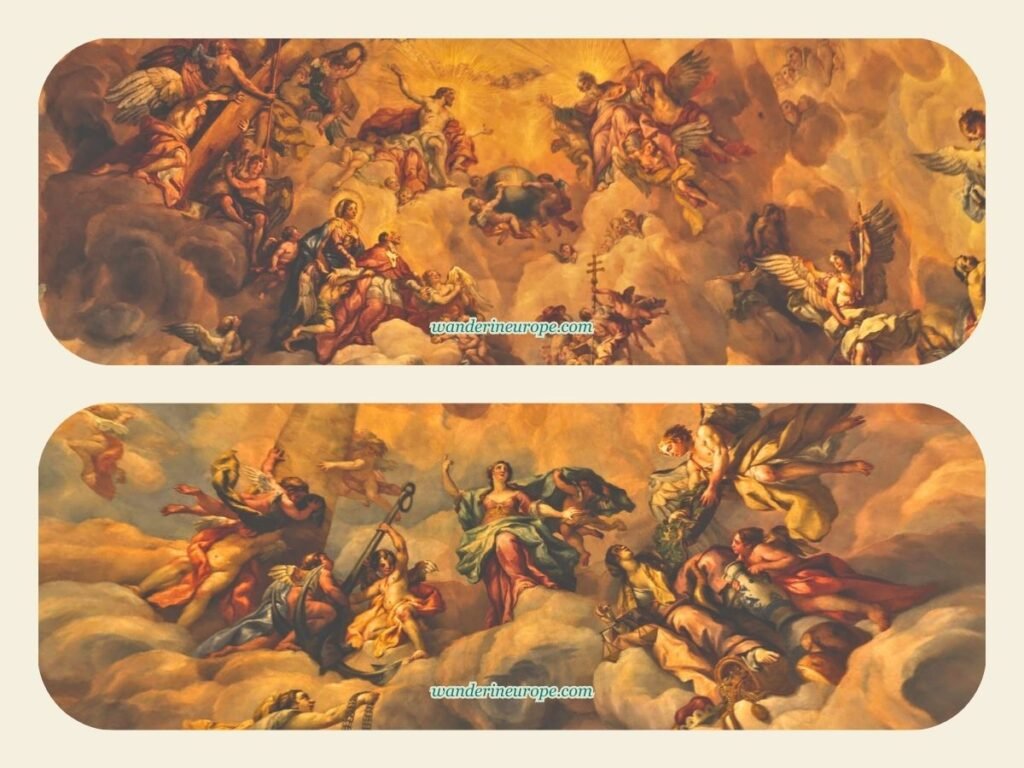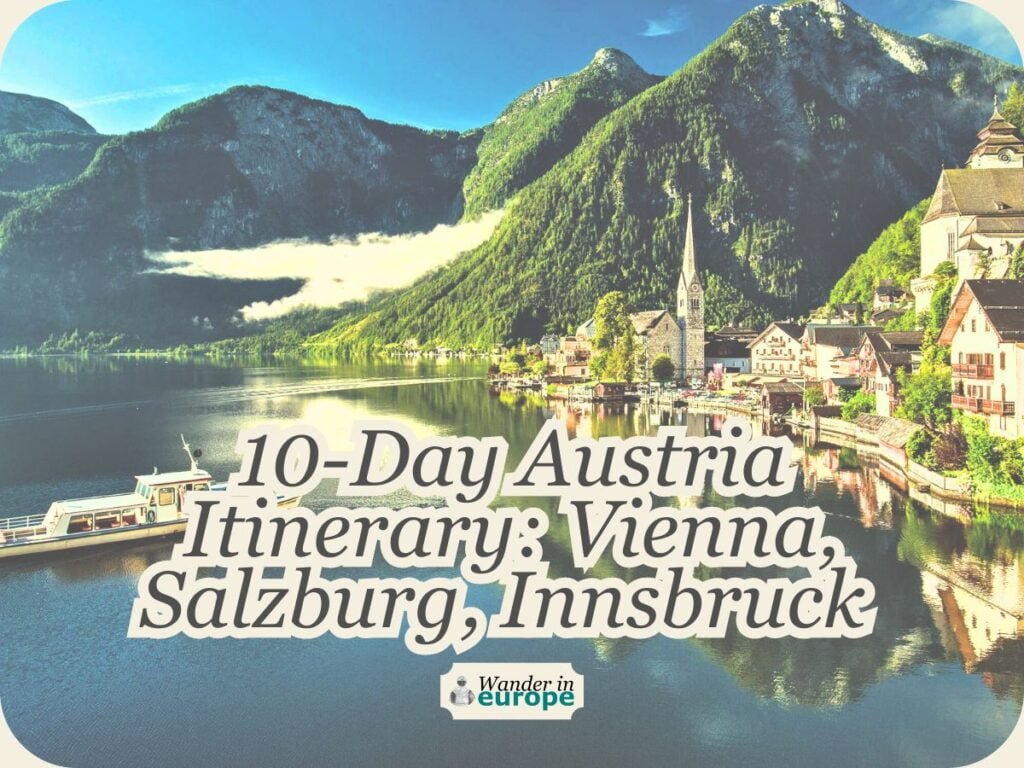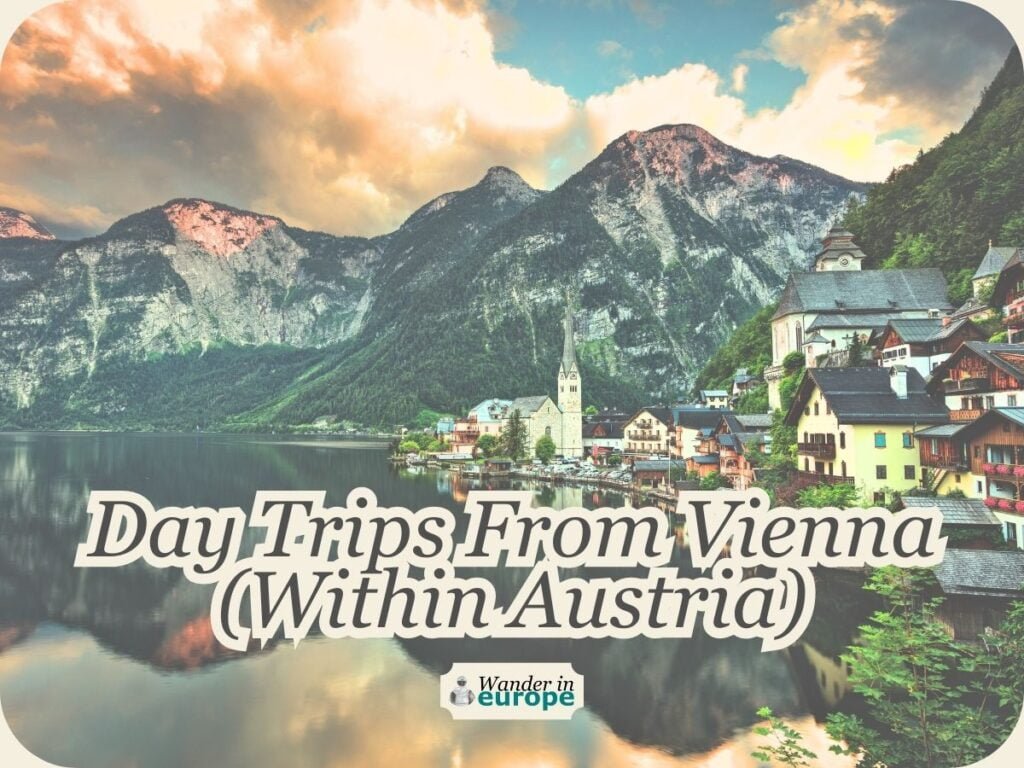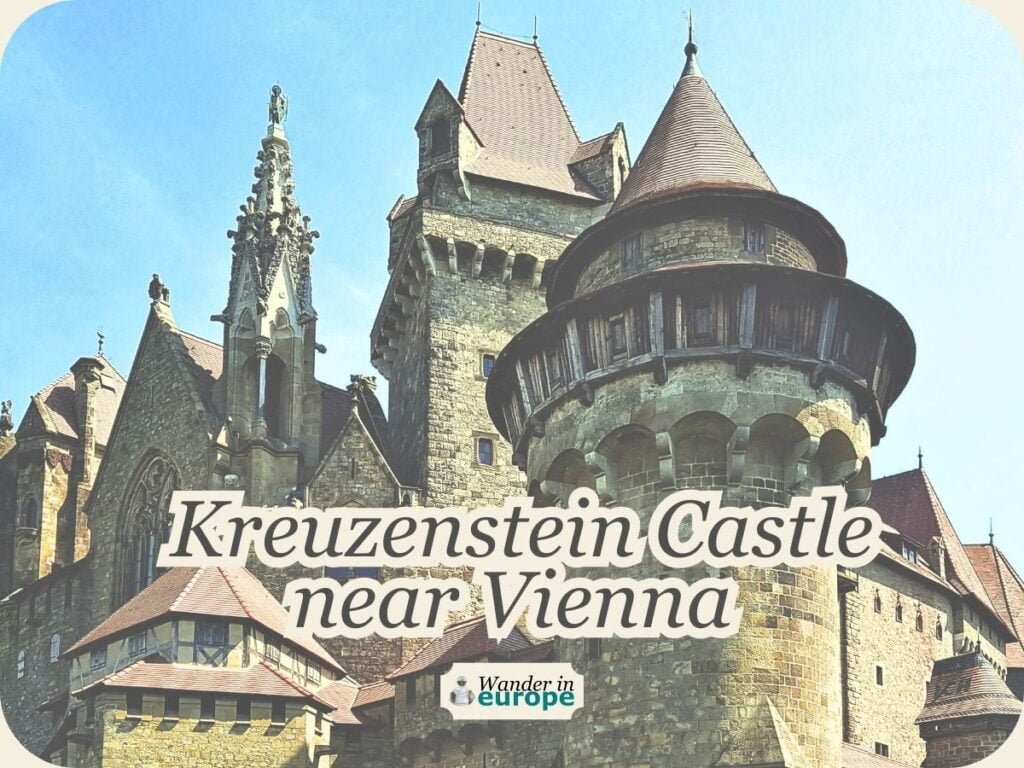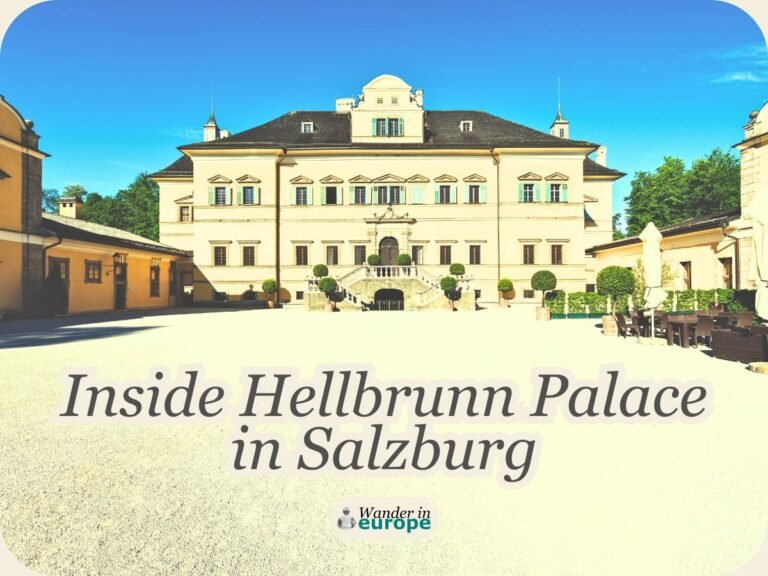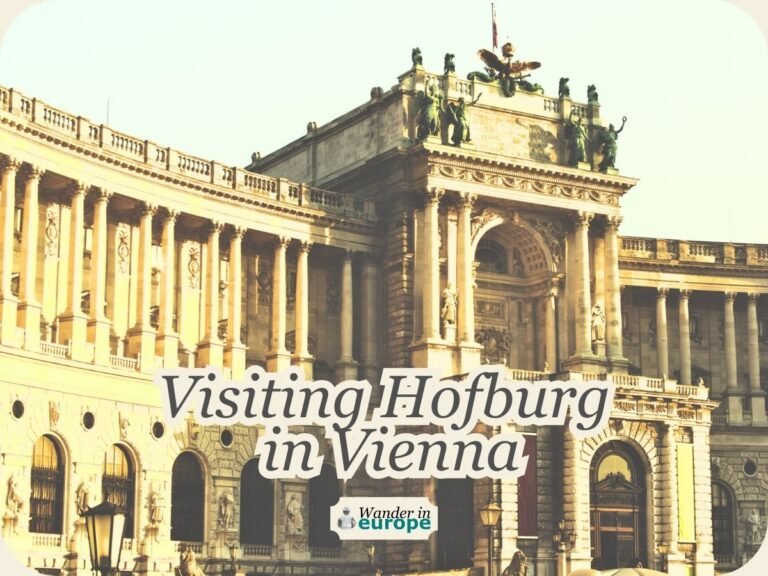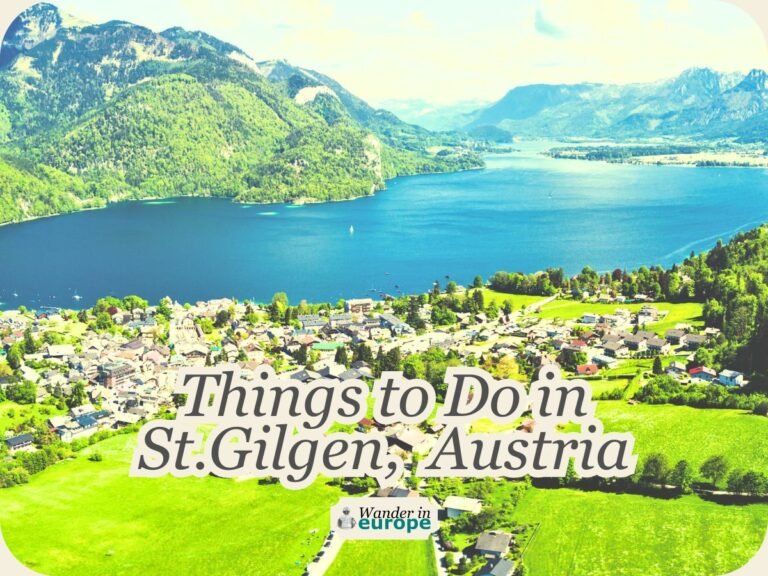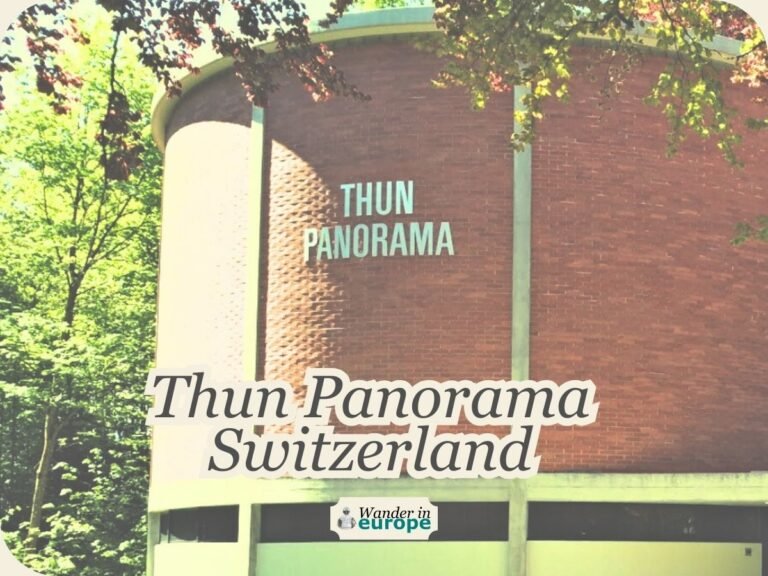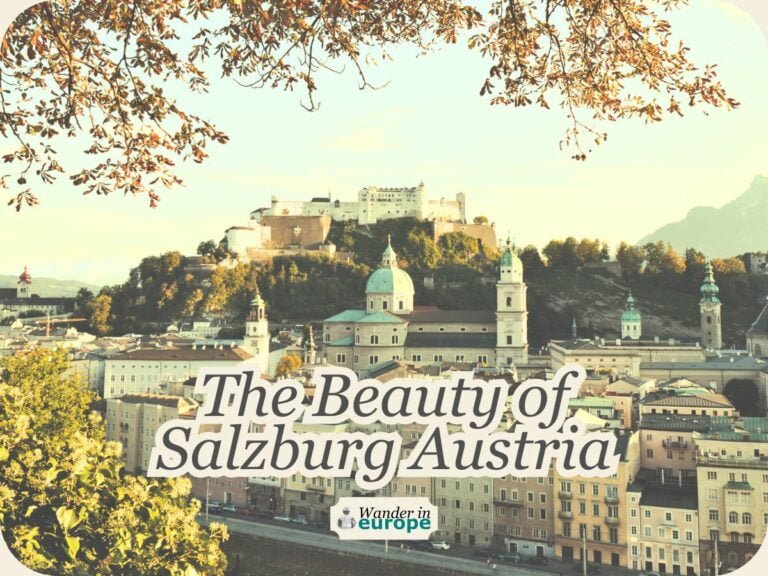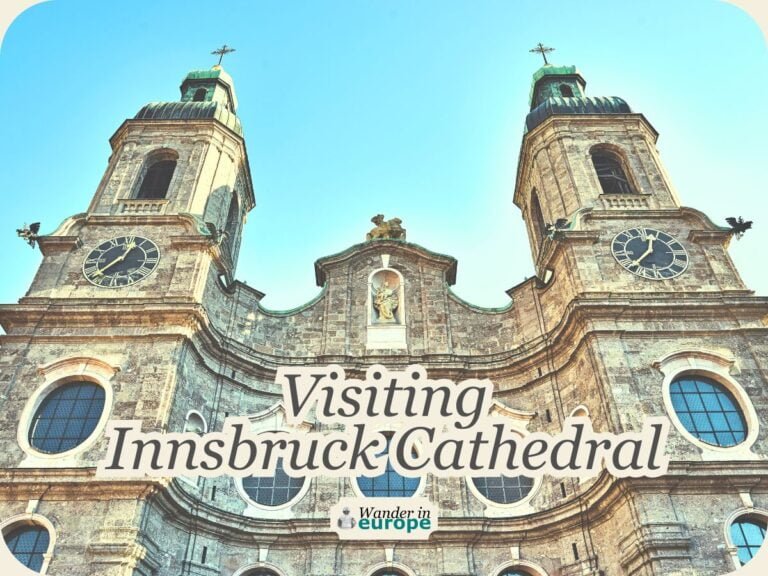All You Need to Know Before You Visit Karlskirche in Vienna
Notes & Disclaimer: (1) Google seems to be having a hiccup. Please use other search engines to find more guides and articles from WanderInEurope. (2) This website is reader supported. And this post might have affiliate links. This means we could earn a small commission if you make a qualifying purchase. No additional cost to you. More info: Disclosure.
As someone who loves to wander and is a big fan of old architecture, I’m always thrilled to see architectural marvels that have a distinct traditional style, like Karlskirche in Vienna.
This church, like Stephansdom, Peterskirche, and Votivkirche, is one of Vienna’s most famous.
To me, Karlskirche, even if placed side by side with Vienna’s magnificent palaces like the Schonbrunn Palace, the Imperial Palace, and the Belvedere Palace, shines with its unique mix of architectural styles.
While it leans towards Baroque, Karlskirche also boast elements of Rococo, Ancient Greek, Ancient Roman, and Byzantine styles. It’s a special kind of beauty you can find in Vienna.
Let me share with you all the discoveries I made at Karlskirche, along with some useful visiting information for your visit to this church.
I’ll also provide some handy tips to ensure you get the most out of your visit.

A Gallery: Catch a glimpse of the magnificent Karlskirche.

Good to know
Here’s the thing: Karlskirche is more than just an architectural attraction.
When I explored this church, I learned that it’s a historically significant place where visitors can have several different experiences.
Here’s a hint: a remarkable musical experience like no other! Notably, visitors can also ascend to its balcony, which offers one of the nicest viewpoints in Vienna.
History and Significance
Karlskirche attracts thousands of tourists yearly. Perhaps one reason is this: Karlskirche is both majestic and intriguing.
Beyond its graceful exterior, it holds historical significance and remains vital to locals who uphold its original purpose.
Exteriors: Definitely Unique!
With Karlskirche’s bright blue dome reaching 70 meters, you can tell that Karlskirche is Baroque even before you arrive in front of this church.
The Oeil-de-Boeuf windows on the dome and its surrounding sculptural elements should leave you with no doubt, not to mention the elaborate frames that are all visible externally!
But as you get closer, it unveils that its architecture is rather complicated: a blend of cultures from different ages.
Notice the pagoda-like roofs on top of the towers of the church’s wings—it seems like Karlskirche has a touch of East Asian culture, too!


Remarkable Features
Did you know what were the first striking features of Karlskirche that caught my eye?
It was Karlskirche’s two Hellenistic columns, reminiscent of Trajan’s Column in Rome, and the church’s Ancient Greek portico. These columns are, without a doubt, the most distinguishing parts of Karlskirche!
Interestingly, Karlskirche’s exteriors can also give you insights into the part of history when it was built, like the relief on the gable tympanum. There, you can see the grateful people spared and healed from the plague.
One particular part of the relief that I found amazing was the skyline of Vienna, carved as the background of the people and angels in the tympanum. The baroque dome of Peterskirche and the towering spire of Stephansdom are well depicted.
It’s hard to see it from the ground because the tympanum is high. If you have a camera with a powerful zoom, it can be really handy in appreciating the reliefs.

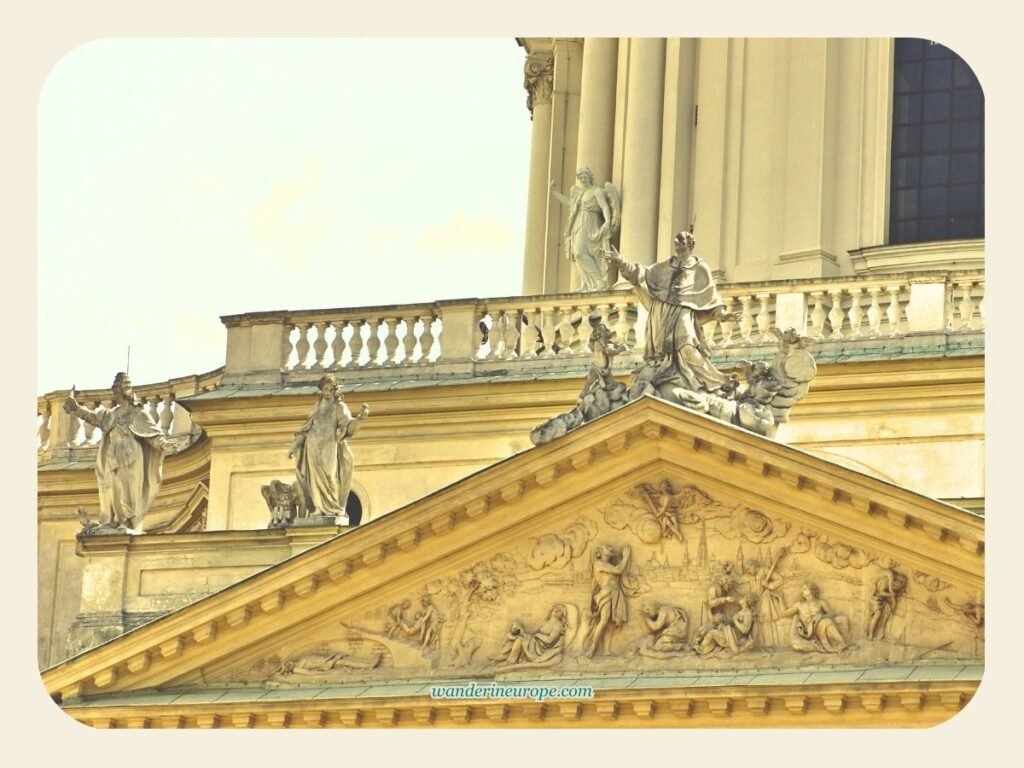

The church’s theme of deliverance from the plague is extended on the two columns in front of the church, which have reliefs depicting the life of Saint Charles Borromeo.
The reliefs spiral up the columns to the top, intended to recall the two columns from the Temple of Jerusalem: Boas and Jachim.


Photogenic Qualities
Unlike Peterskirche and Stephansdom, Karlskirche is located outside the Old Town. It’s easier to appreciate Karlskirche’s exteriors, since it’s more spaced out there.
You can find several spots around this church where you can see it gracing the view of the city.
Karlskirche even has a park in front, Karlsplatz, and you can spend a few minutes there to have a lovely stroll.
Karlsplatz offers tranquil views of Karlskirche which you would not want to miss if you’re into photography. For epic photos of Karlskirche, go to the side of the pond opposite the facade of the church.
If the pond is still, you can photograph the church with an inverted image on the water.


Interiors: Magnificent Symbolisms
The exteriors look amazing with the different architectural styles applied, but it’s just the beginning of the eye-pleasing experiences in Karlskirche.
While I think Peterskirche is Vienna’s most beautiful baroque church, I can’t still emphasize enough that Karlskirche is one of the finest baroque churches I’ve seen. Karlskirche’s interiors are just magnificent.
Step inside and you’ll be immersed in indescribable opulence, with the deliberate use of gold leaf and marble sparingly applied.


The Use of Light & Shadow
If you’re into seeing the most beautiful scenes inside Karlskirche, the best time to go is during a sunny day early in the morning or late in the afternoon when the sun makes a lower angle with the ground.
It’s the time when you can see sunlight enter the church through the windows of Karlskirche, letting you witness the spectacle of baroque architecture: the dramatic use of light and shadows.
In those moments, you can see more visual contrast in the stuccoes above the chapels and more vibrance in the frescoes in the dome.
Through these artworks, frescoes and stuccoes, the interiors of Karlskirche provide deeper insights into why it was built: for healing through divine mercy.
This is why you can see paintings inside the church depicting Christ raising the son of the widow of Nain and Christ healing the centurion’s servant.


The High Altar
Of course, there’s the image of Saint Charles Borromeo, the healer patron saint of the church.
His image is in the high altar of Karlskirche, and he is depicted in his ascension to heaven. Above the saint’s image is the most divine depiction of God inside Karlskirche — the Hebrew Tetragrammaton/Yahweh.
Bursting with rays like the sun, this image of God symbolizes his omnipotence and guiding love.

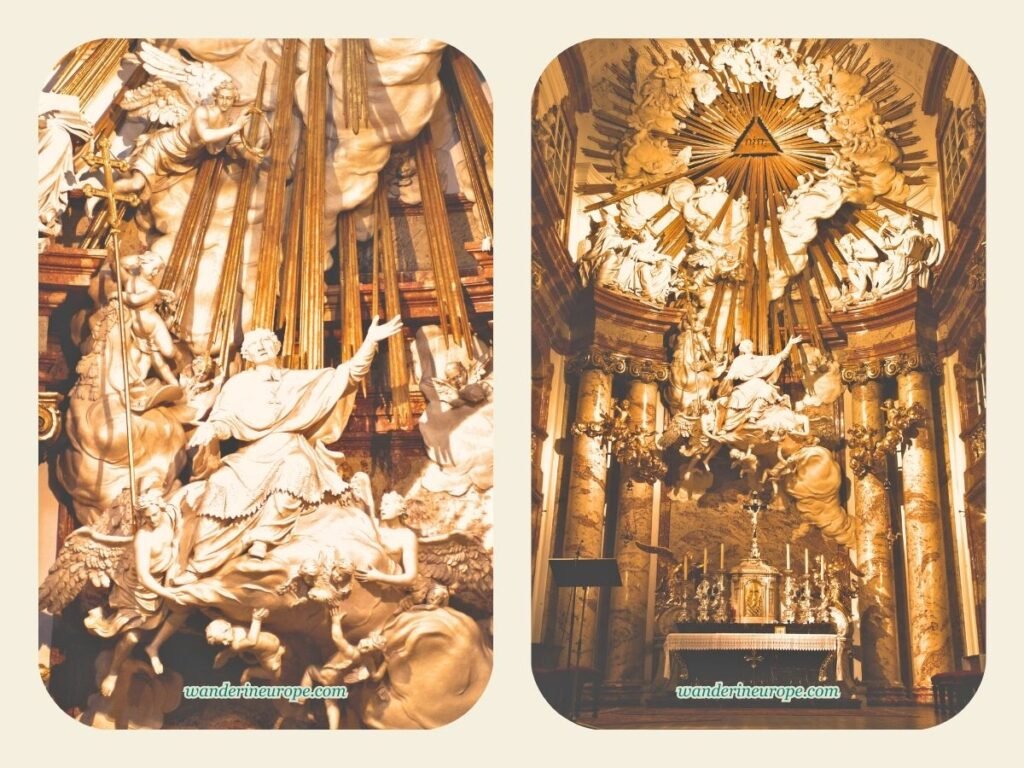

The Frescoes
Another impressive artwork, however, is the dome frescoes, which depict the heavenly intercession of Saint Charles Borromeo and the Virgin Mary, with angels and heavenly figures that symbolize cardinal virtues.


The Pulpit
If you are looking for artistic elements inside Karlskirche, the pulpit near the choir of the church is worth mentioning.
Covered with gold, this wooden pulpit is a feast for the eyes with its rich floral, rosette, and rocaille ornaments. Come closer to it to see the finer carvings that are crafted from hard walnut.
On top of the pulpit is a theatrical canopy with two putti holding a cross and a chalice with a host, symbolizing the places where we can find Christ.

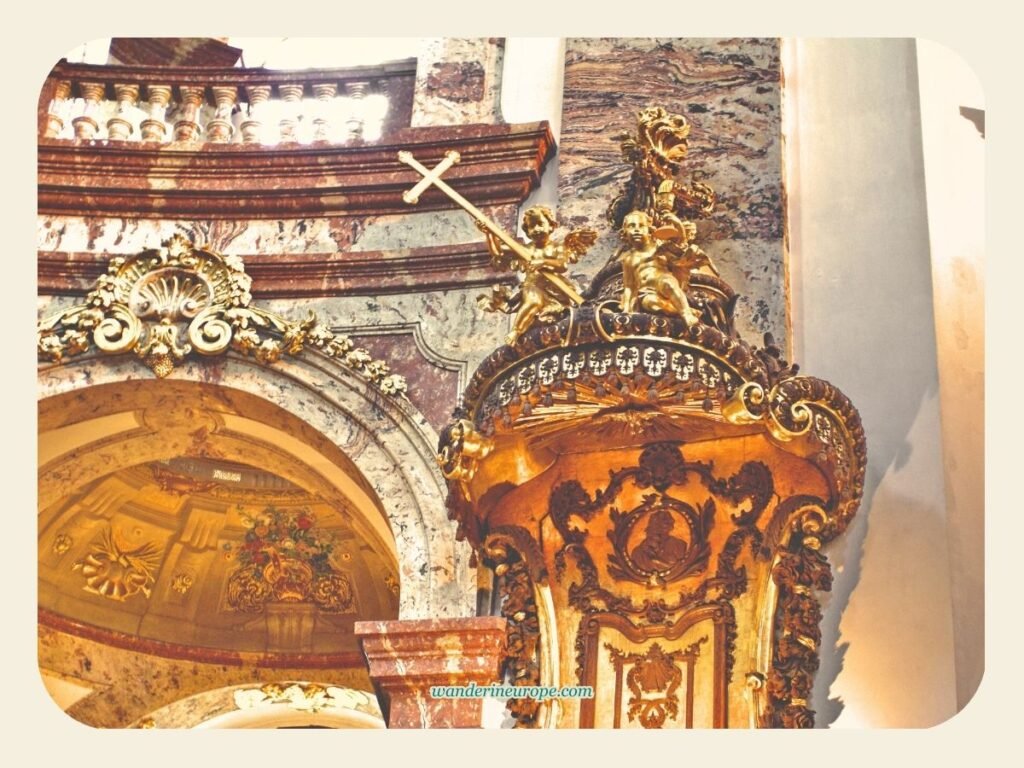

Summary: Should You Visit?
Inspired by the Divine, Karlskirche is undoubtedly a beautiful place you would like to see in Vienna.
However, you should not set your expectations very high if you’ve been to some of Europe’s most famous churches. Karlskirche might look like just an ordinary church to you if that is the case.
Nevertheless, if you’re an architecture enthusiast like me, you would not want to miss Karlskirche for its unique style. Wandering inside and outside this church is fun.
Magnificent things await you inside for your eyes to feast on.
Indeed, Karlskirche is one of the best architectural landmarks in Vienna.
Putting myself in the shoes of ordinary travelers, however, I would not prioritize Karlskirche over the top attractions in Vienna — particularly if I only have a couple of days to explore the city.
However, if it’s already my second time in Vienna, I’ve already seen the top attractions in the city, and I’m now up for something unique, this is the time I would not miss Karlskirche.
Did you know that Karlskirche has a very special experience to offer?
It’s none other than the concerts inside this church. The concert is performed by Orchester 1756, making it a worthwhile, unique, and authentic musical experience in Vienna.
Concert: A Special Experience
If there’s another great reason to visit Karlskirche, it has to be the classical concerts that take place inside the church.
Concerts here are performed by a special musical ensemble called Orchestra 1756.
They specialize in playing historical “original” instruments, mostly violins and similar stringed instruments, and performing baroque music. Mozart’s Requiem and Vivaldi’s Four Seasons are regularly performed here by this amazing ensemble.
Overall, it’s a 75-minute concert, and to me, the highlight is the part when they play all four of Vivaldi’s concertos: ‘La Primavera’ for Spring, ‘L’Estate’ for Summer, ‘L’Autunno’ for Autumn, and ‘L’Inverno’ for Winter.
I’m not good at explaining how beautiful music is, but it is said that they are evocative of natural sounds. Parts of the musical masterpiece represent singing birds, creeks, and even barking dogs.
And when you listen to the concert, with your imagination running wild, I believe you’ll easily get it.
Even if you can’t imagine the evocative sounds that Vivaldi’s Four Seasons has, I think you will still really enjoy the concert. Just focus on the members of the ensemble as they play.
While the ensemble only has about 10 members, you can feel their passion and enjoyment in playing the musical instruments.
Because of them, I think the musical experience could be unforgettable and very moving.
Also, with the beautiful architecture and the music they’re playing, I’m sure you’ll get some goosebumps during the concert. The atmosphere is magical.
I don’t want to spoil it for you. But if you want a glimpse of the astonishing musical experience that you can have inside Karlskirche, you can watch the YouTube video in the resources section of this post.
You can check this link to learn how you can attend a concert inside Karlskirche.
You might find these interesting!
Visiting Information
Karlskirche is located in the 4th district of Vienna.
If you want to visit Karlskirche, you just have to catch a bus that has a stop at Karlsplatz (4A). Alternatively, the nearest subway station is Karlsplatz (U1, U2, U4). The nearest tram stop is Karlsplatz/Oper (1, 2, 62, 71, D).
There is an entry fee which is not less than 10 EUR for adults. It’s quite expensive to me, but you can think of it as a donation for the upkeep of Karlskirche.
Good to know: the entry fee to the church already includes access to the treasury, organ loft, and the panoramic terrace. The last time I checked, there was an elevator which lets you get very close to the dome. From there, you can appreciate the beautiful frescoes inside the church up close.
Note: The entry free to the church could increase at any time, so please check the official website of Karlskirche linked in the resources section.
The church is open from 9:00 am to 6:00 pm, but then again, please check for new announcements from the church’s website. For the best experience, I recommend attending the concert!
Resources
So, that’s it! That’s everything I have to share about Karlskirche. To learn more about the things we’ve discussed or if you want to get the latest information about Karlskirche, the links below should help you with those.
- Vivaldi L´Estate (Summer, Der Sommer) – Video
- Official website of Karlskirche
- Official website of Orchestra 1756
- Attend a concert in Karlskirche
Plan Your Trip Now
Here are my recommended services


Explore more amazing destinations in Vienna and find guides to help you get the most out of your trip!
Guides & Itineraries
Lists & New Ideas
Top Attractions

